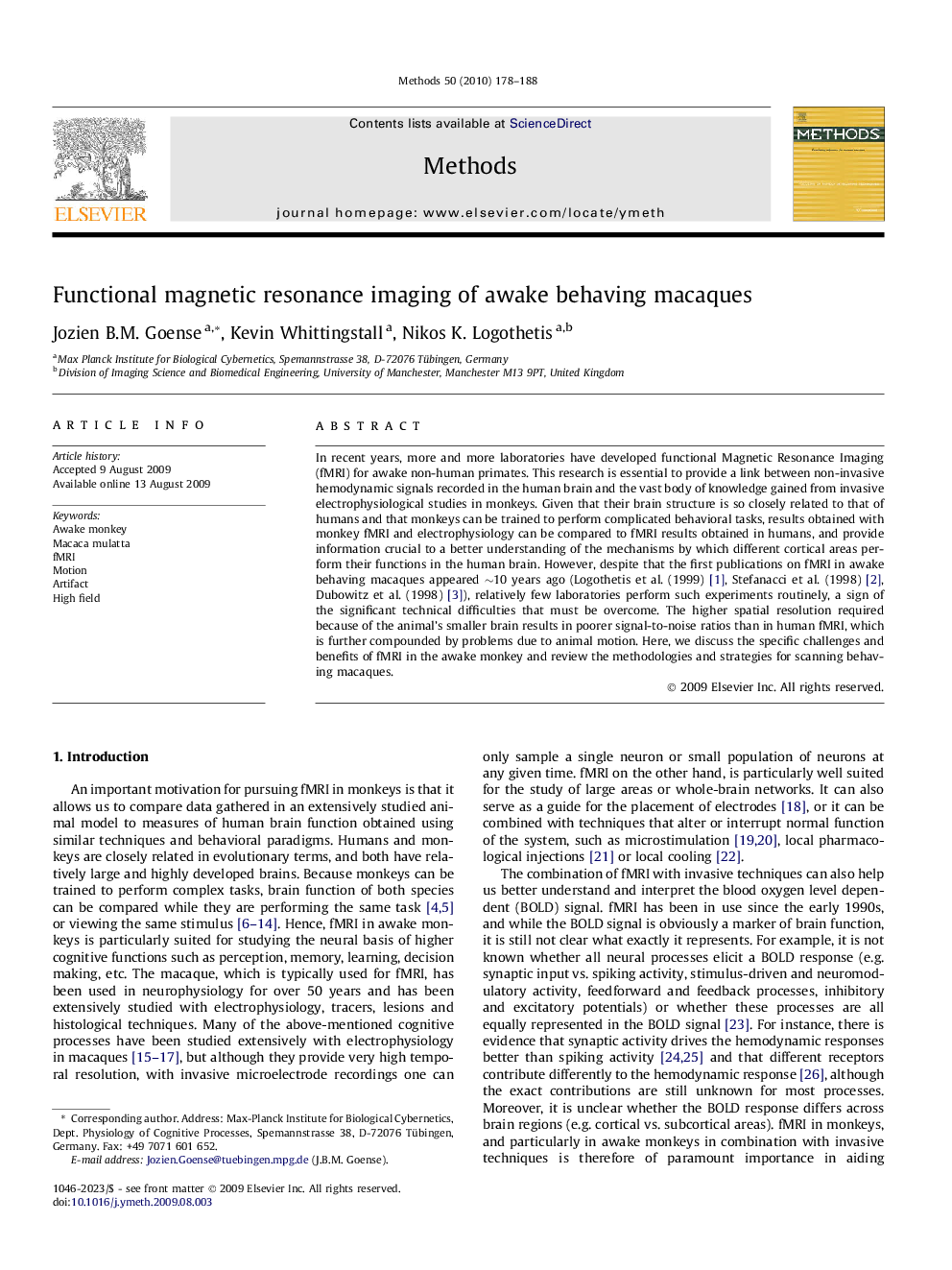| کد مقاله | کد نشریه | سال انتشار | مقاله انگلیسی | نسخه تمام متن |
|---|---|---|---|---|
| 1994061 | 1064731 | 2010 | 11 صفحه PDF | دانلود رایگان |

In recent years, more and more laboratories have developed functional Magnetic Resonance Imaging (fMRI) for awake non-human primates. This research is essential to provide a link between non-invasive hemodynamic signals recorded in the human brain and the vast body of knowledge gained from invasive electrophysiological studies in monkeys. Given that their brain structure is so closely related to that of humans and that monkeys can be trained to perform complicated behavioral tasks, results obtained with monkey fMRI and electrophysiology can be compared to fMRI results obtained in humans, and provide information crucial to a better understanding of the mechanisms by which different cortical areas perform their functions in the human brain. However, despite that the first publications on fMRI in awake behaving macaques appeared ∼10 years ago (Logothetis et al. (1999) [1], Stefanacci et al. (1998) [2], Dubowitz et al. (1998) [3]), relatively few laboratories perform such experiments routinely, a sign of the significant technical difficulties that must be overcome. The higher spatial resolution required because of the animal’s smaller brain results in poorer signal-to-noise ratios than in human fMRI, which is further compounded by problems due to animal motion. Here, we discuss the specific challenges and benefits of fMRI in the awake monkey and review the methodologies and strategies for scanning behaving macaques.
Journal: Methods - Volume 50, Issue 3, March 2010, Pages 178–188